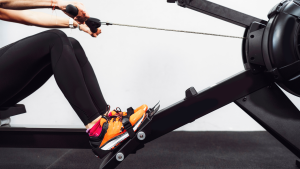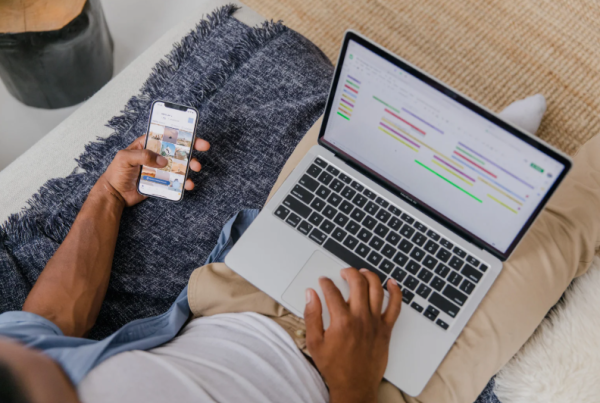In last week’s blog, we introduced a condition known as POTS – postural orthostatic tachycardia syndrome. To recap quickly – POTS is a condition where changes in posture (i.e. from laying to sitting, or sitting to standing) or extended time in upright postures causes a significant increase in heart rate, along with a cluster of other debilitating symptoms resulting from lack of blood flow to the brain.
Take a look at our Condition Spotlight for POTS to learn more about the physiology of what is occurring within the body, and the hallmark symptoms experienced by those with POTS.
This week, we are taking a more practical approach. This blog is all about the best approach for exercise (and other lifestyle changes) to improve POTS symptoms. Enjoy!
Exercising with POTS – An Overview
Intolerance to exercise is a common challenge for individuals with POTS, often causing worsening symptoms after an exercise session. It’s no surprise that exercise can seem a counterintuitive treatment modality for these individuals! But physical deconditioning (being unfit) is a perpetuating factor of the condition – in other words, it maintains the severity of symptoms over time.
The truth is that exercise is one of the best things for POTS recovery, when done in the right way. This is because exercise helps to increase blood cells and blood plasma volume, improve the size and contractility (strength of contraction) of the heart muscle, and overall improve the ability of the body to circulate the blood back up to the heart (1).
All these benefits really do add up… But exercising with POTS can be a challenge given that most exercise is completed upright and therefore a trigger for symptoms! So while individuals experiencing POTS are best to keep active, this will likely involve making some tweaks to the workout.
Exercise while Laying Horizontal, Reclined, or Sitting
Because of the sensitivity to upright / standing postures, it is best to start with exercise that is either horizontal (such as swimming), reclined (such as in a recumbent bike), or seated with legs elevated (rowing).
All these exercises help for POTS because they reduce the work that must be done to overcome the impact of gravity on the fluids in the body. This means that it is easier to get the blood back to the heart, and up to the brain – they allow the body to exercise while not triggering the symptoms that are brought on by more upright postures.

Post-exertional malaise (fatigue brought on by exertion) is common, and we want to minimise this where possible. Using a heart rate monitor, as well as a symptom diary, can be useful to determine the appropriate intensity that doesn’t elicit symptoms. You’ll also want to avoid exercises that involve rapid changes in posture, such as burpees.
Focus on Developing Leg and Core Strength
In particular, we want to focus on strengthening the calf muscles – this is because they provide a ‘pump-like’ action through one-way valves in the veins, to help circulate the blood back up to the heart. The core muscles and glutes also act as pumps to help press the blood from the lower half of the body back up towards the heart.
We can utilise these natural pump systems in the body by increasing the strength of the muscles that the blood vessels travel through! Floor-based pilates-style exercises can be a great way to do this as they provide an opportunity for strengthening in a horizontal lying position.
Managing Fatigue
A big component of POTS recovery is around helping the body to better regulate the autonomic nervous system – this means bringing in all those golden fatigue management strategies! Pacing, and avoiding booming and busting is key.
This is why we encourage a gradual progression with exercise. On the good days, it’s common to feel tempted to push just a little harder… But hold back! We want a nice, stable energy expenditure on each and every day, so that you don’t end up two steps back because you’ve overdone it on a good day.
Increase the time spent on exercise gradually, i.e. try 5-10 minutes during the first week, then increase by only 1-2 minutes each session. Aim to build up to sessions of 20-30 minutes, and complete on 3-5 days per week. Once you have built up a tolerance to horizontal or seated exercise, you can start to gradually include exposure to more upright forms of exercise, such as upright biking, the cross trainer and walking / running.
Relaxation and breathing strategies can also be helpful for aiding recovery. Managing stress is important, given the impact that stress has on the autonomic nervous system!
Other Tips

Other lifestyle changes can make a big difference to your recovery when done in addition to your exercise program.
- Avoid prolonged standing – this is because the blood starts to pool in the lower legs (thanks to gravity). A simple trick that you can do while standing is to complete standing calf raises to aid with getting that blood flow back up to the heart and brain.
- Increase fluid intake and salt consumption to help increase blood volume. With an increase in blood volume available in the body, the heart is able to fill and eject more with each heartbeat. This prevents the incidence of tachycardia (increased heart rate) as the heart does not have to increase its rate in order to maintain sufficient blood flow, reducing symptoms (2).
- On this same note – keep well-hydrated during exercise!
- Pay attention to temperature regulation during exercise. Keep cool with fans, cooling towels and mist bottles (2). This is because when our core body temperature increases, our blood vessels widen and move towards the surface of the skin to allow the heat to be transferred. Widened blood vessels result in a reduction in blood volume leaving the heart as the blood accumulates in these ‘open’ blood vessels.
- Compression tights can be useful to help improve the return of blood to the heart – compression of the lower limbs prevents the pooling of blood in the legs (2).
- Avoid alcohol – this dilates the blood vessels (vasodilation) and lowers blood pressure further.
- Talk to your GP about medications to improve symptoms.
Dealing with Setbacks
Change won’t happen overnight! Be patient with yourself. Fatigue and other symptoms may set in after exercise – this isn’t something to fear, it’s just your body’s way of saying that you went a little bit too hard, too soon. Regress your exercise plan, either by reducing the duration or intensity of exercise, or returning to more horizontal forms of exercise.
While there is no cure for POTS, some people do grow out of it and others find that changes to their lifestyle or taking medication can improve their symptoms (3). But the good news is that exercise, when done in a way that is tolerated, is a great way to improve symptoms and get back to doing those things you love.
References:
- https://www.ncbi.nlm.nih.gov/pmc/articles/PMC6289756/
- https://www.potsuk.org/managingpots
- https://www.healthnavigator.org.nz/health-a-z/p/postural-orthostatic-tachycardia-syndrome-pots/
Author: Yolanda van Vugt Clinical Exercise Physiologist and Content Creator at Specialised Health Supporting material provided by Jennifer Smallridge from Connection Medicine.
Let’s connect, find us:
Have you got a claimant that would benefit from E.P. support? Refer to the team!
#exercisephysiology #exerciserehab #rehabilitation #lifeinsurance #incomeprotection #ctp #workcover #mobile #telehealth #telehealthprogram #mobileexercisephysiology #returntowork #fatigue #mentalhealth #cancer #musculoskeletal #pain #physio #physiotherapy #Sydney #Brisbane #Melbourne #Adelaide #Auckland #Waikato #BayofPlenty #Wellington #Otago #Christchurch



